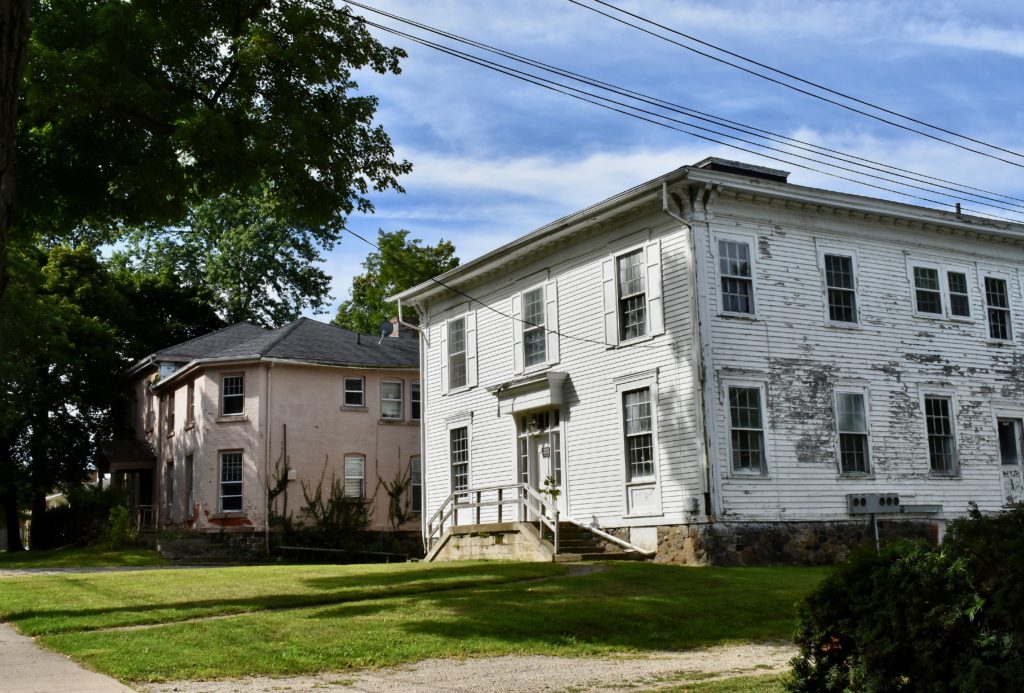
More than a year and a half ago, an Ohio-based development company approached the city of Hillsdale about a building project for a new 50-unit apartment complex at the corner of Westwood and North West streets. At the next city council meeting on Sept. 4, members will vote on a Payment in Lieu of Taxes for the proposed rent-controlled Wells Apartments.
Tom Grywalski, the co-founder and principal of Spire Development and Spire Consulting, said the PILOT is one part of the developer’s application process in order to receive project approval from Michigan State Housing Development Authority. The PILOT is one way of calculating real estate taxes by tying the property taxes Spire pays to the amount of revenue the property brings in.
Hillsdale’s City Zoning Administrator Alan Beeker said approval of the PILOT would give Spire the go-ahead to complete the application process to receive tax credit by the state’s Oct. 1 deadline. Only one-third of applicants in Michigan will receive a tax credit from the state. The PILOT is essential to meeting Spire’s goal of “de-rent burdening” people in the community by making the taxes on the property reasonable enough to control market rents.
Grywalski said Wells Apartments would not be subsidized or Section 8 Housing. Instead, local banks would invest in the project through a federal tax credit. Under the Community Reinvestment Act, which was passed by the federal government in 1977, banks are required to invest in communities from which they take deposits.
“One of the qualifying investments for them is to invest in these tax credits,” Grywalski said. “It is a private investment from the banks fulfilling their statutory obligation.”
The monthly rates of these units will be based on Hillsdale’s “area median income,” a term referring to how much one household earns relative to the city of Hillsdale’s average household income. Households that qualify for subsidized housing fall at or under 30% AMI and are considered extremely low-income.
The purpose of the new apartment complex, Grywalski said, is to provide a safe, new, and alternative housing for the “missing middle” of Hillsdale County.
“Wells Apartments will serve this 50, 60, 70 percent AMI that we’re talking about – not low enough to qualify for subsidy, not high enough to buy the new house,” he said.
Spire will be required by MSHDA to obtain both employment and income verification letters from prospective tenants’ employers in order to prove they can pay the rent.
“There are a lot of levels of regulation that we have to go through,” Grywalski said. “And the scrutiny that’s provided and the consistency of that scrutiny of that screening process that’s applied to the resident is in all likelihood a greater degree of scrutiny than the average landlord that has a property that doesn’t involve MSHDA.”
Some Hillsdale residents have expressed concern about the project and its chosen location. The proposed site location includes 52, 58, 60 and 66 N. West St. Resident Lauren Fink said 58 N. West St. was originally built by judge Edward H.C. Wilson in 1800, and 60 N. West St. was originally built by publisher Harvey B. Rowlson in 1849.
“A lot of us really don’t want this aesthetic in our town,” Fink said. “Not because there’s something wrong with it in general, but because the reason we live here is because we’re willing to buy an old house and fix it up because we find that beautiful.”
Beeker, however, said neither of the homes are considered “historic” despite their old age.
“If it were to become a historic district, it would dictate what type of plumbing you use, what type of electrical you use, what type of windows you install, and what type of finishes you use,” Beeker said. “Any improvements you make have to be set through the state historic office before you can move forward with them. And nobody wanted that.”
Hillsdale City Manager David Mackie added that two of the properties that would be destroyed to make room for the apartments are vacant and not maintained.
“There will be vagrant issues, and these houses will need to be taken down at some point,” Mackie said. “And this is kind of a win-win scenario because the city doesn’t have to take them down.”
In 2011, the property at 58 N. West St. was damaged in a meth lab explosion. Additionally, the other proposed sites for this project did not meet state requirements due to the presence of contaminants or the inability to divide and sell the desired land.
Grywalski added that when an appropriately positioned tax credit project development removes blight, surrounding home values can increase. The apartments could also lead to further development in the area.
In the case of Hillsdale County, the apartments may create more opportunities for job growth. Executive Director of Hillsdale Economic Development Susan M. Smith said the county does not have enough housing to meet the needs of recently hired employees and companies seeking worksites.
“These people that are coming in at that entry-level have nowhere to live,” Smith said. “And the problem for me and trying to attract business to Hillsdale County is that if I don’t have a place to put and house workers, I cannot grow these industries.”
Oftentimes, Smith must tell employers seeking a worksite that Hillsdale County does not have the housing or the workforce for a project. Without these two factors, Smith said it’s difficult for the community to grow.
Leading up to the vote on Tuesday, the project already has permit approval for zoning, Beeker said, as its proposed location site has been a high-density housing zone since the 1960s.
“This is the district that the city, long-term, expected to have high-density housing developments, which is what this is,” Beeker said. “It’s exactly where, historically, the city would want this development.”

